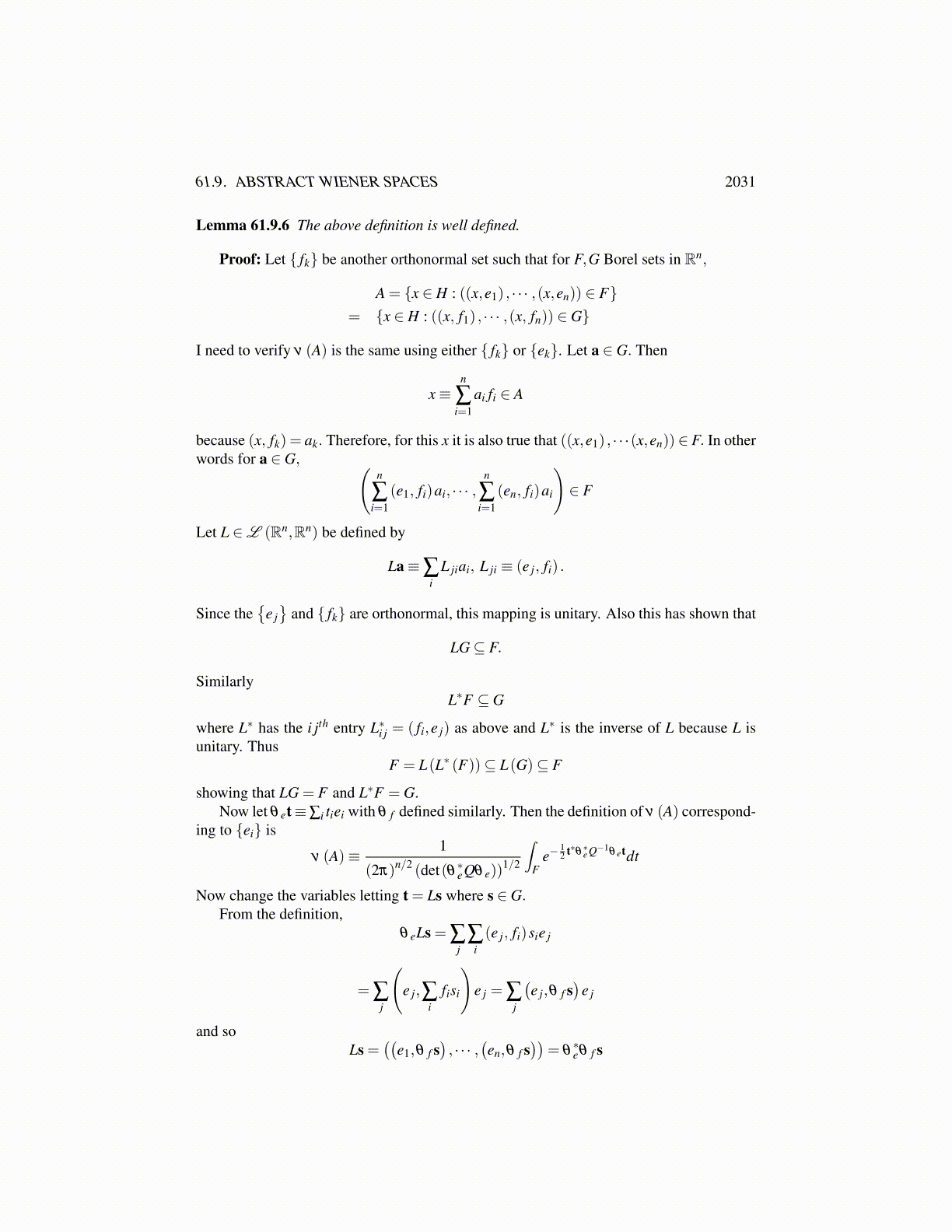
61.9. ABSTRACT WIENER SPACES 2031
Thus Px ∈ α−1 (F) , which is a Borel set of PH and
x = Px+(I−P)x
so the cylinder set is contained in
α−1 (F)+(PH)⊥
which is of the form(Borel set of PH)+(PH)⊥
On the other hand, consider a set of the form
G+(PH)⊥
where G is a Borel set in PH. There is a basis for PH consisting of a subset of {e1 · · · ,en} .For simplicity, suppose it is {e1 · · · ,ek}. Then let α1 : PH→ Rk be given by
α1 (x)≡ ((x,e1) , · · · ,(x,ek))
Thus α is a homeomorphism of PH and Rk so α1 (G) is a Borel set of Rk. Now
α−1(
α1 (G)×Rn−k)= G
and α1 (G)×Rn−k is a Borel set ofRn. This has proved the following important Propositionillustrated by the following picture.
B
B+M⊥
Proposition 61.9.3 The cylinder sets are sets of the form
B+M⊥
where M is a finite dimensional subspace and B is a Borel subset of M. Furthermore, thecollection of cylinder sets is an algebra.
Lemma 61.9.4 σ (C ) , the smallest σ algebra containing C , contains the Borel sets ofH,B (H).
Proof: It follows from the definition of these cylinder sets that if fi (x) ≡ (x,ei) , sothat fi ∈ H ′, then with respect to σ (C ) , each fi is measurable. It follows that every linearcombination of the fi is also measurable with respect to σ (C ). However, this set of linear